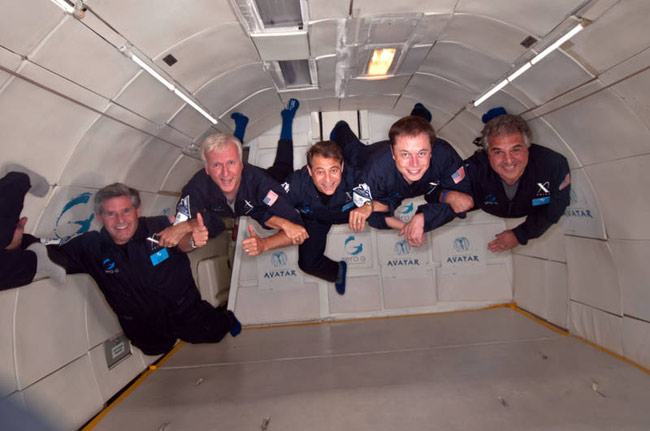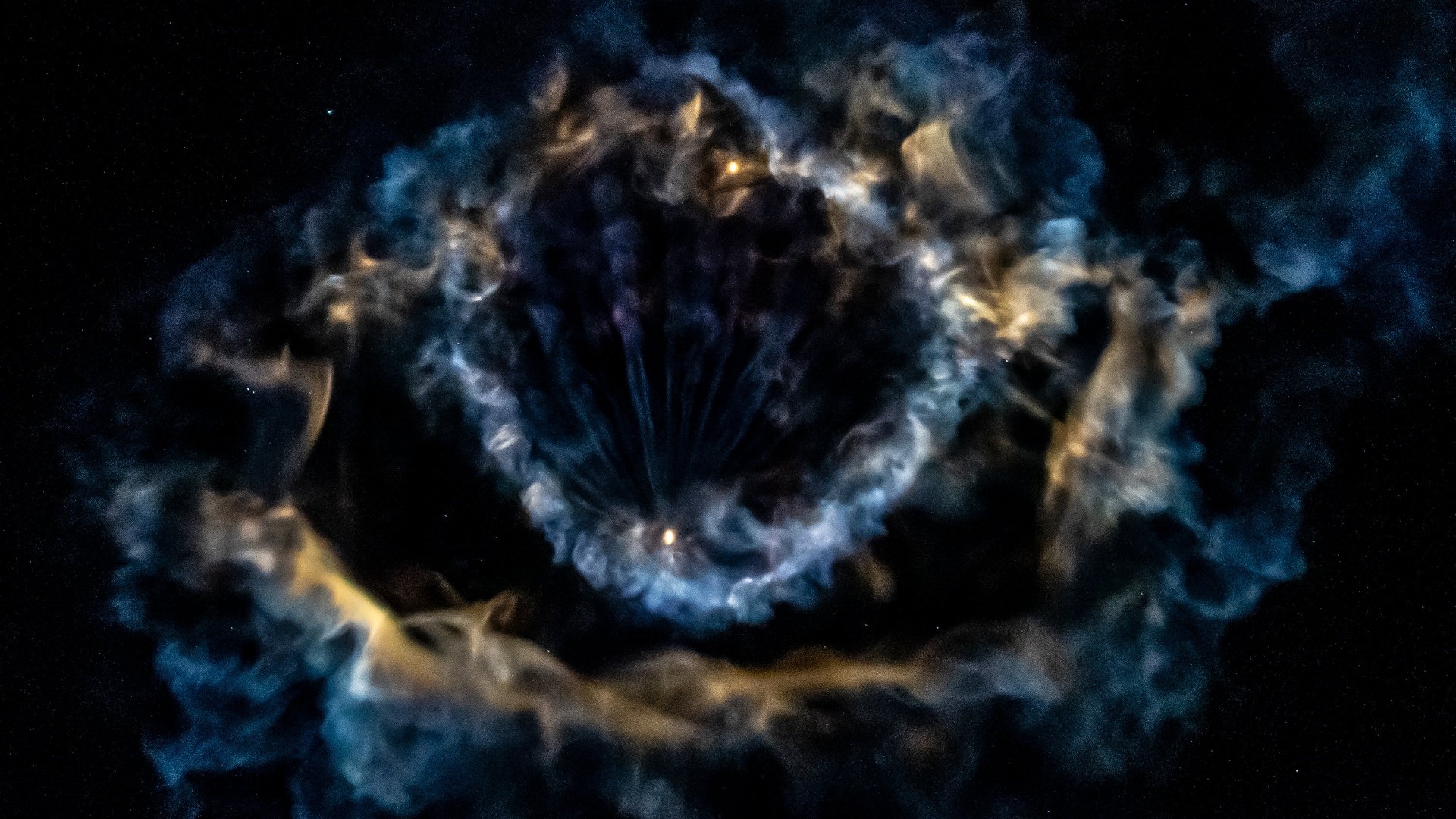Weightlessness and its effect on astronauts

The sensation of weightlessness, or zero gravity, happens when the effects of gravity are not felt. Technically speaking, gravity does exist everywhere in the universe because it is defined as the force that attracts two bodies to each other. But astronauts in space usually do not feel its effects.
The International Space Station, for example, is in perpetual freefall above the Earth. Its forward motion, however, just about equals the speed of its "fall" toward the planet. This means that the astronauts inside are not pulled in any particular direction. So they float.
Not having to bear weight on your feet sounds relaxing, but in the long term there are many health problems associated with it. Bones and muscles weaken, and other changes also take place within the body. One of the functions of the ISS is to study how astronaut health is affected by long periods in weightlessness.
Experiencing weightlessness
You don't have to leave Earth to (briefly) escape the bonds of gravity. Anyone who crested the top of the hill in a fast roller coaster, or who sat in a small plane pushed down suddenly by the wind, briefly experienced weightlessness.
More sustained periods are possible in planes that fly a parabola. NASA's reduced gravity flight program, for example, flies planes in a series of about 30 to 40 parabolas for researchers to conduct experiments on board. Each climb produces a force about twice the force of gravity for 30 seconds. Then, when the plane, also called the "Vomit Comet" because it makes some passengers nauseous, reaches the top of the parabola and descends, passengers feel microgravity for about 25 seconds. (If you want to experience this yourself, companies such as Zero G Corp. provide weightless joyrides in aircraft, for a price of course.)
The film crew and actors on the movie "Apollo 13" spent hours aboard a plane that flew parabolic flights over and over again. This allowed the actors to really "float" during their time in the movie spacecraft rather than relying on cumbersome wires.
Astronauts, however, experience weightlessness for much longer periods. The longest sustained time spent in space took place in 1994-95, when Valeri Polyakov spent almost 438 days in space.
Even a few days in space can present temporary health problems, as Heidemarie Stefanyshyn-Piper discovered after spending two weeks in space during STS-115 in 2006. During a press conference after the landing, Piper collapsed, as she was not quite readjusted to gravity.
Temporary health effects
Weightlessness causes several key systems of the body to relax, as it is no longer fighting the pull of gravity. Astronauts' sense of up and down gets confused, NASA said, because the vestibular system no longer can figure out where the ground and the ceiling are. Spacecraft designers take this into account; the ISS, for example, has all of its writing on the walls pointing in the same direction.
Crewmembers also experience a disruption in their proprioceptive system, which tells where arms, legs and other parts of the body are oriented relative to each other. "The first night in space when I was drifting off to sleep," one Apollo astronaut said in a NASA interview, "I suddenly realized that I had lost track of ... my arms and legs. For all my mind could tell, my limbs were not there."
This disorientation can cause astronauts to become queasy for a few days. One famous example took place during Apollo 9 in 1969. Rusty Schweickart had to change a planned spacewalk because he was feeling ill. The concern was that if he vomited while in his spacesuit, the fluid could spread through his helmet (making it hard to see) or interfere with the breathing apparatus and cause him to potentially choke to death.
Spacecraft also must be designed to take microgravity into account. During spacewalks, for example, astronauts require extra handholds and footholds on the exterior of their spacecraft so that they can anchor themselves and not float away. (Astronauts also attach to them in tethers in case they lose their grip.)
Long-term health effects
Astronauts in space for weeks to months can run into trouble. Calcium in bones secretes out through urine. As the bones weaken, astronauts are more susceptible to breaking them if they slip and fall, just like people with osteoporosis. Muscles also lose mass.
But time on the International Space Station has helped NASA run studies on how astronaut health is affected by time in weightlessness. Already the agency has made changes. For example, it replaced the interim Resistive Exercise Device (iRED) with the Advanced Resistive Exercise Device in 2008, allowing astronauts to do weight-lifting without "maxing out" their top weight. ARED is linked to better outcomes in bone density and muscle strength, although all conclusions in space are hard to draw (in the general since) since the astronaut population is fit already and extremely small.
Astronauts typically have an allocated exercise period of two hours a day in space to counteract these effects; this time not only includes cardiovascular exercise and weight-lifting, but also time to change clothes and set up or take down equipment. Despite exercise, it still takes months of rehabilitation to adjust on Earth after a typical six-month space mission. More recently, doctors have discovered eye pressure changes in orbit. NASA has tracked vision changes in astronauts that were on the space station, but nothing so serious as to cause concern. Its cause is still under investigation, although one possible culprit includes spinal fluid that stays constant in microgravity instead of the normal shifting that takes place on Earth as you lie down or stand up. In addition to spinal fluid, a 2017 study tracked changes in both short-flight and long-flight astronauts. Some studies also point out that astronauts experience a slightly elevated level of carbon dioxide on the station because of the filtration system; that gas may also contribute to eye problems.
Former NASA astronaut Scott Kelly participated in a rare, one-year mission to the International Space Station in 2015-16. His twin brother and former NASA astronaut Mark (who retired before Scott) agreed to participate, along with Scott, in several "twin experiments" to compare Scott's health in space with that of Mark's on the ground.
Preliminary results from one study released in October 2017 showed that different genes turn on or off in space. Other studies discussed earlier that year revealed subtle changes as well. For example, telomeres (which slow down chromosome deterioration) in Scott temporarily got longer in space. Scott also had a slight deterioration in cognitive ability (thinking speed and accuracy) and bone formation, although not enough to be concerning.
Scientists who work with microgravity health experiments note that often the changes seen in orbit mimic what happens as people naturally age, although often the processes are different. A group of Canadian researchers — some of whom have expertise in space medicine — have access to a long-term health facility for seniors at the University of Waterloo. There, researchers can measure seniors in their residences rather than bringing them into a lab, where the conditions are artificial and can mask or exaggerate certain health conditions.
Join our Space Forums to keep talking space on the latest missions, night sky and more! And if you have a news tip, correction or comment, let us know at: community@space.com.
Breaking space news, the latest updates on rocket launches, skywatching events and more!

Elizabeth Howell (she/her), Ph.D., was a staff writer in the spaceflight channel between 2022 and 2024 specializing in Canadian space news. She was contributing writer for Space.com for 10 years from 2012 to 2024. Elizabeth's reporting includes multiple exclusives with the White House, leading world coverage about a lost-and-found space tomato on the International Space Station, witnessing five human spaceflight launches on two continents, flying parabolic, working inside a spacesuit, and participating in a simulated Mars mission. Her latest book, "Why Am I Taller?" (ECW Press, 2022) is co-written with astronaut Dave Williams.
